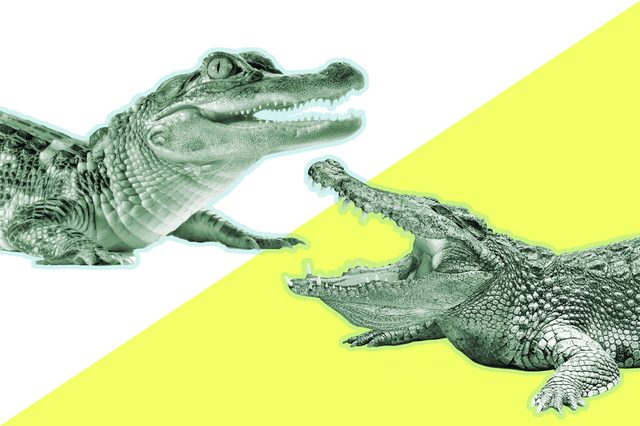
Alligator vs. Crocodile
One sees you later, the other in a while. Another difference: Alligators have wide U-shaped snouts, and crocodiles tend to have more pointed V-shaped snouts. Alligators’ upper jaws are wider than their lower jaws, so when their mouths are closed, the teeth in the upper jaws are visible, while the teeth in the lower jaws are not. Conversely, crocodiles’ upper and lower jaws are about the same width, so when the mouth is closed, several lower teeth are visible. There are only two existing alligator species, the American alligator, native to the southeastern United States, and the endangered Chinese alligator, native only to the Yangtze River. There are 23 existing species of crocodile, and they’re found in tropical waters in Africa, Asia, the Americas, and Australia. Can you spot the camouflaged animals hidden in these photos?
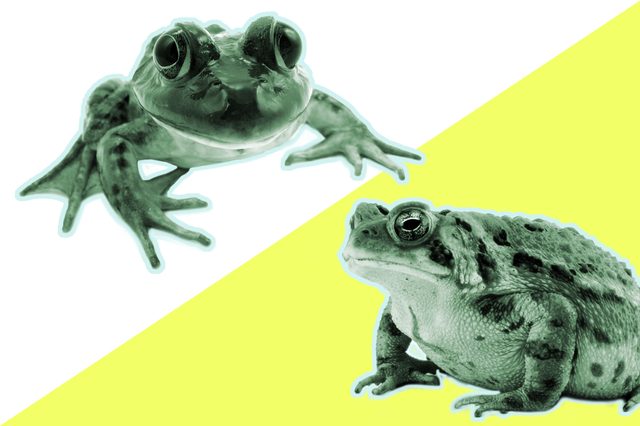
Frog vs. Toad
All toads are frogs, but not all frogs are toads. Both are species of amphibians. Frogs spend their lives close to water, but toads are able to venture farther onto dry land. Toads are often brown and have dry, bumpy skin. Frogs are mainly green and are wetter and smoother to the touch. Frogs have teeth; toads don’t.
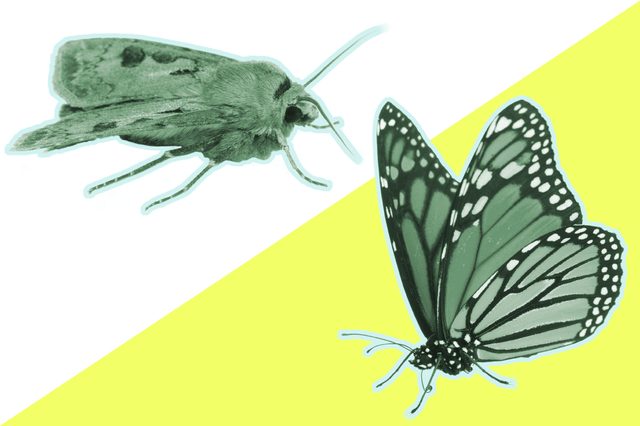
Moth vs. Butterfly
Moths have plump bodies and feathery antennae, whereas butterflies have skinny bodies and long, slender antennae. Butterflies prefer sunshine—they actually can’t fly unless their wings are warm enough. That’s why you only see butterflies on nice days (which they make even nicer). Moths are mostly nocturnal, but they also like light, which is why you mostly see them dive-bombing your porch light. Here are some gross creepy-crawly animal species you’ve probably never heard of.
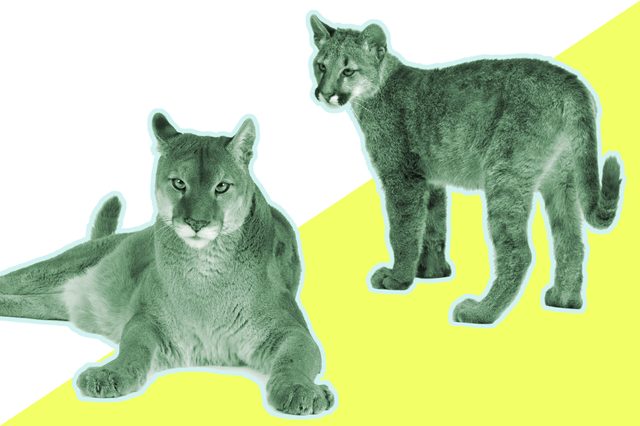
Cougar vs. Mountain Lion vs. Puma vs. Panther
They’re the same animal. In fact, no other single animal has more names in the dictionary. Why? Because Puma concolor has such a wide range (from South America all the way north to the Yukon) the wild cats go by many names. In the western U.S., some call them pumas, others call them cougars, and still others call them mountain lions. East of the Mississippi they’re known as panthers, painters, and catamounts.
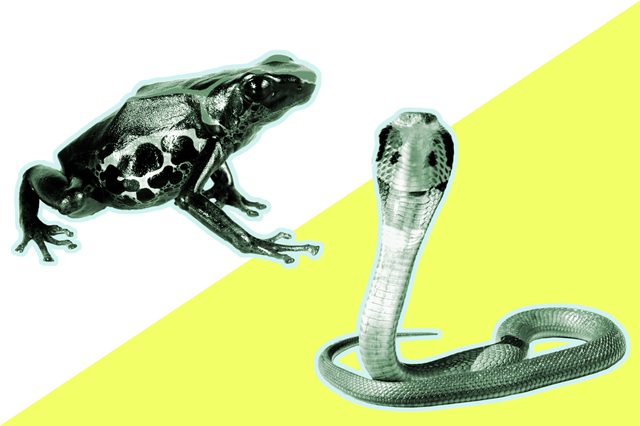
Poisonous vs. Venomous
A poisonous animal spreads its poison by touch, such as a frog with poisonous skin. It’s basically a defense mechanism. A venomous animal uses its toxin primarily for predation, which it delivers via teeth or stingers. So if your friend is yelling, “Help, a poisonous snake is trying to get me!” make sure you correct his misnomer before helping him.
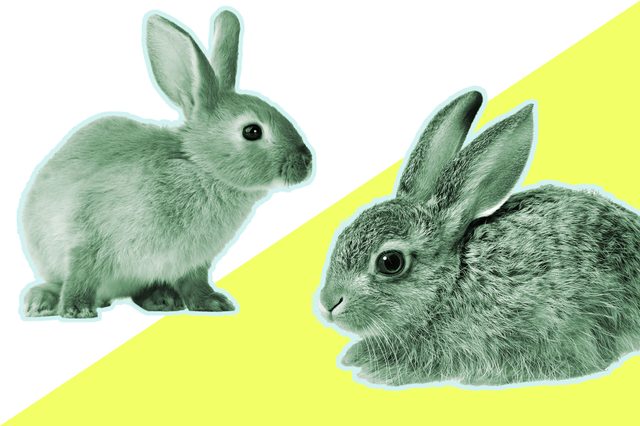
Rabbit vs. Hare
Both are small mammals with long ears in the family Leporidae. The main difference: Rabbits (with the exception of cottontails) dig burrows and bear their young underground, and all rabbits’ young are born blind and hairless. Hares, on the other hand, build nests on the ground. Their young are born fully furred with open eyes and are therefore much more able than newborn rabbits to fend for themselves. Also, hares are generally larger and have longer ears. Check out these adorable animal photos that will make you melt.
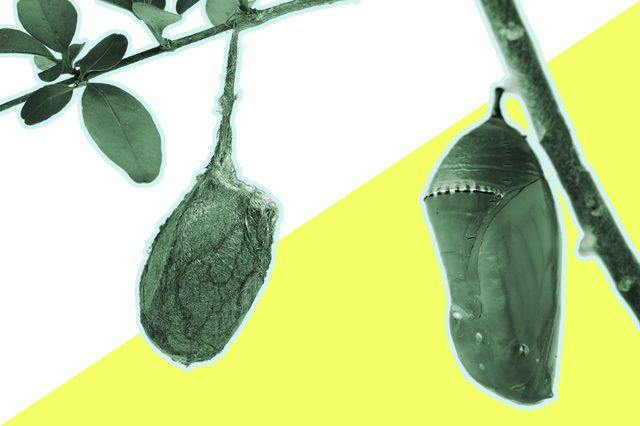
Chrysalis vs. Cocoon
Think they’re the same? That’s a moth-conception! (Sorry.) When a moth caterpillar is ready to enter the pupa stage, it spins silk into a cocoon for protection until it can emerge as a winged, adult moth. A butterfly caterpillar doesn’t spin a cocoon but becomes a type of pupa called a chrysalis. Instead of spinning a silk outer covering, the chrysalis itself forms into a hardened protein for protection. These animals have amazing “superpowers” you’ll wish you had.
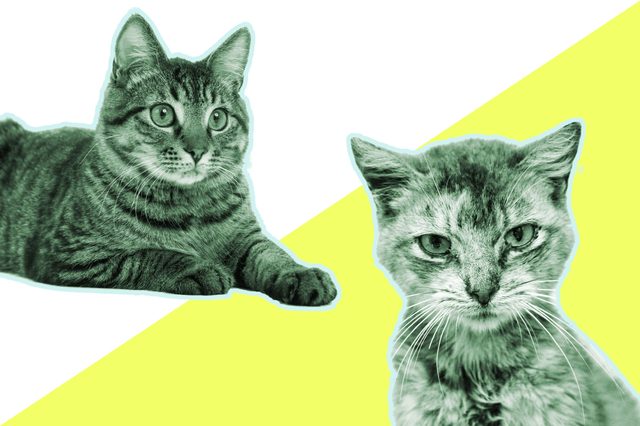
Stray vs. Feral
A stray is technically a domesticated animal that once had a home, but it was abandoned or ran away, forcing it to survive in the wild. A feral animal was born in the wild, but its domesticated ancestors had homes. Watch out for these innocent-looking animals that can be surprisingly dangerous.
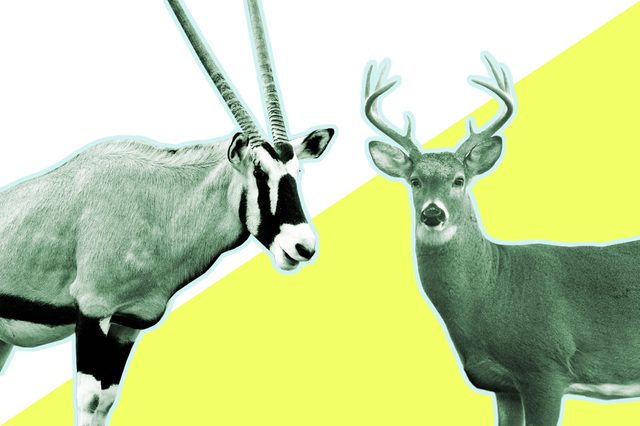
Horns vs. Antlers
The horns of antelopes and the antlers of deer, although comparable in function, differ considerably in structure. Horns, usually possessed by both sexes, are permanent features that continue to grow throughout the animal’s life. They are bony projections from the skull, covered with keratin, which is tougher than bone. Antlers, by contrast, are pure bone and are formed and shed every year. They are normally grown only by male deer, but female reindeer and caribou have them as well.
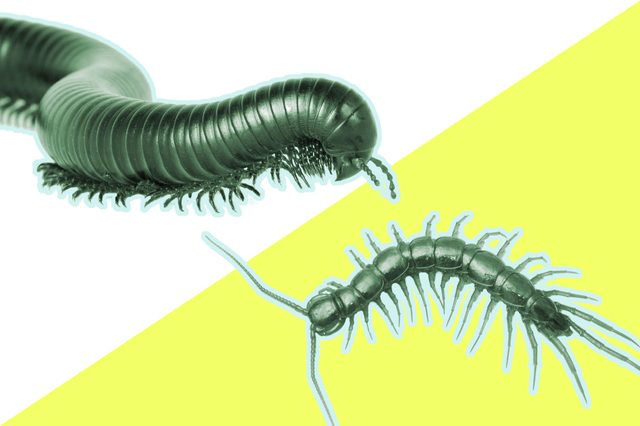
Centipede vs. Millipede
It has nothing to do with the number of legs they have. Centipede means “100 feet” in Latin, and different centipede species have from 28 to 358 legs. Millipede means “1,000 feet,” and they have from 22 to 750 legs. The real differences: Centipedes have one pair of legs per body segment; millipedes have two. Centipedes are venomous and are almost exclusively carnivores, eating insects; millipedes are almost exclusively detritivores, meaning they eat detritus: decomposed organic matter. Think you’ve got your animal distinctions down? See if you can tell the difference between these nearly identical creatures.

Get More Fun and Fascinating Facts!
Looking for more amazing facts and good laughs? Check out the latest Uncle John’s Bathroom Reader titles at bathroomreader.com. Next, learn some facts about animals you have all wrong.
